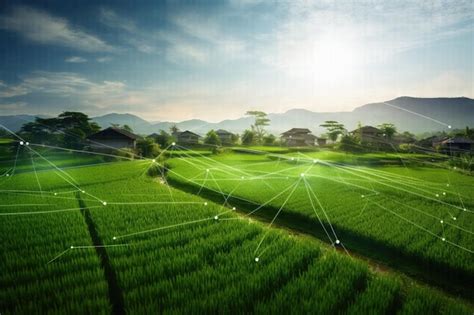Agricultural drones are not just high-tech toys; they’re becoming indispensable tools for modern farming, especially in regions like the Mekong River delta. This bustling area, known for its rich rice paddies, is now the focal point of technological innovation that could redefine how we think about and conduct agriculture. The integration of AI and drones brings numerous benefits, including more efficient use of resources, improved crop yields, and a move toward more sustainable farming practices.
Visiting Vietnam today, particularly after the global impact of Covid-19, reveals remarkable changes in both urban and rural landscapes. One noticeable shift, as highlighted by returning visitors, is the increased prevalence of English-speaking locals, a development attributed to extensive online learning during lockdowns. Drones, once a rare and expensive commodity, are now readily available across the country, illustrating Vietnam’s growing technological appetite.
Drones being used in rice farming symbolize more than just a technological upgrade; they represent adaptability and innovation in Vietnamese culture. The ability to procure and utilize such advanced tools also underscores the country’s rapid technological progression. The once difficult-to-obtain aerial devices are now accessible and are playing a pivotal role in the Mekong River delta’s transformation. These drones are used for a variety of purposes, from surveying fields to applying fertilizers and pesticides, thereby optimizing agricultural productivity.
In contrast to Vietnam, some neighboring countries like Japan are seeing different trends. Interestingly, in Japan, there’s a sentiment that English proficiency is declining due to reduced tourism and less interaction with foreigners. This stands in stark contrast with Vietnam, where economic motivations drive a focus on learning English. This disparity can influence the adoption and implementation of technology as well, considering that much of the instructional material and global technological discourse is in English.
Vietnamese culture is intrinsically capitalistic, and this economic pragmatism is evident in how locals have embraced learning English to cater better to foreign visitors and business opportunities. This cultural trait also extends to agriculture, where advancements such as drones and AI tools are promptly adopted to boost productivity and profitability.
Innovation in environmental conservation is yet another area where Vietnam is striving hard. While the country battles severe waste management issues and social habits of littering, there are efforts to shift towards environmental sustainability, such as the gradual adoption of electric vehicles and systematic waste management campaigns.
Pesticide and fertilizer application in flooded rice fields have traditionally been labor-intensive and imprecise. The introduction of drones is changing this. By applying precise doses of chemicals only where needed, these drones significantly reduce the quantity of chemicals used, while ensuring more uniform and effective coverage. This method not only boosts the efficiency of pesticide use but also mitigates the adverse environmental impacts associated with excessive chemical use.
The technological shift is not without its critics and challenges, however. There’s a growing discourse about the ecological ramifications of such advancements. For instance, in some regions, the indiscriminate spraying by drones has been linked to declining bird populations and other unintended effects on local wildlife. This underscores the necessity for careful and informed deployment of these technologies to balance productivity and ecological conservation.
Globally, the use of drones in agriculture isn’t new, but it’s the scaled efficiency in complex terrains like the Mekong River delta that sets Vietnam apart in this narrative. Countries like the United States are also deploying drones for similar agricultural purposes, though they face stricter regulatory hurdles. Regions like Australia optimize drone use by combining them with ground-based machinery, illustrating diverse approaches to integrating these technologies.
Ultimately, the integration of AI and drones in Vietnamese rice farming is a dynamic example of how technology can empower farmers, optimize resource use, and pave the way for sustainable agricultural practices. This change is transforming not just the Mekong River delta but also serves as a model for similar ecosystems worldwide. The focus should be on balanced innovation that brings technological benefits while preserving the ecological and cultural fabric of the regions adopting these technologies.


Leave a Reply